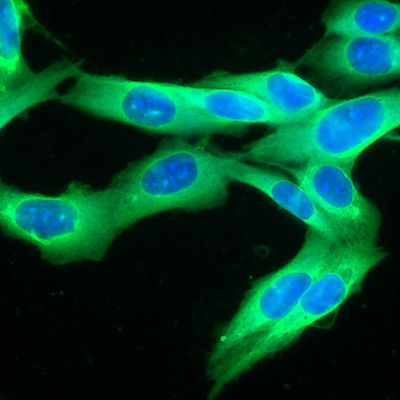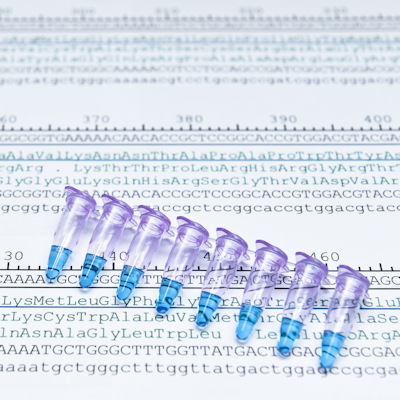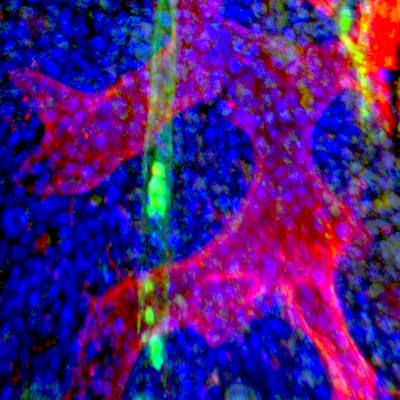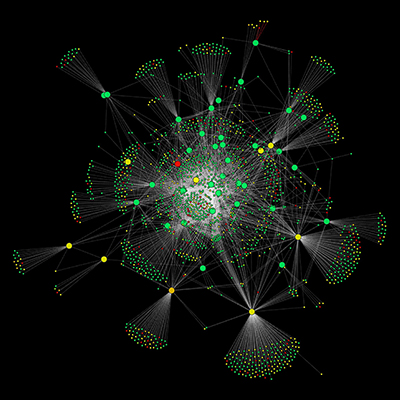April 6, 2021 -- Researchers have developed a new RNA sequencing method that can help discover many types of previously undetectable small RNAs. Details of the method, called panoramic RNA display by overcoming RNA modification aborted sequencing (PANDORA-seq), were published in Nature Cell Biology on April 5.
Cells are full of RNA -- intermediate molecules used to synthesize proteins from DNA -- in complex and diverse forms, such as ribosomal RNA (rRNA) and transfer RNA (tRNA). Small noncoding RNAs, including micro RNA (miRNA) and tRNA-derived small RNA (tsRNA), are known to contribute to many conditions, such as cancer and neurological diseases. These small RNAs contain many RNA modifications.
Known to be abundant in mammalian somatic cells, miRNA control the kinds and amounts of proteins the cells make. They are by far the most-studied class of small RNA molecules.
The use of high-throughput RNA sequencing has led to the discovery of many functional small noncoding RNAs. The method traditionally relies on the construction of complementary DNA (cDNA) libraries for deep sequencing of small noncoding RNAs with adapter ligation, followed by reverse transcription. This works well for some RNA species, such as miRNAs, but has inherent limitations with some small noncoding RNAs that bear specific RNA modifications that prevent them from being efficiently or completely converted to cDNA.
Some protocols have been developed to remove key RNA modifications that block adapter ligation and reverse transcription. These include treatments with the dealkylating enzyme α-ketoglutarate-dependent hydroxylase (AlkB) to demethylate RNA modifications, thereby enabling reverse transcription and T4 polynucleotide kinase (T4PNK) to convert the 3' end of the RNA into 3′-OH. This also adds a 5′-terminal phosphate (5′-P), thus facilitating adapter ligation.
To uncover more in-depth composition of small noncoding RNAs, a team of researchers from the University of California, Riverside (UCR) developed the PANDORA-seq method. The technique uses consecutive enzymatic treatments of the small RNA fraction (15-50 nucleotides) with T4PNK and AlkB to optimize adapter ligation and reverse transcription during cDNA library construction.

"Modified small RNAs wear an 'invisibility cloak' that prevents them from being detected by traditional RNA-sequencing methods," said lead author Qi Chen, PhD, assistant professor of biomedical sciences in the UCR School of Medicine, in a statement. "How many such modified RNAs are there? What is the origin of their sequences? And what exactly is their biological function? These are questions PANDORA-seq may be able to answer."
The team assessed PANDORA-seq outcomes in a variety of mouse and human tissue and cell types, including mouse brain, liver, spleen, and mature sperm cells, mouse embryonic stem cells (ESCs), human ESCs, HeLa cells, and cells during the reprogramming of mouse embryonic fibroblasts into induced pluripotent stem cells.
The researchers found that contrary to the current understanding, miRNAs do not make up the majority of small noncoding RNA population in many tissues and cell types. They found that with treatment with AlkB and T4PNK, tsRNAs and rsRNAs were the most dominant small noncoding RNA species among the samples. These species were previously undetected using traditional RNA sequencing methods.
The team further analyzed the expression patterns of tsRNAs and rsRNAs across six tissue and cell types in mice (brain, liver, spleen, mESCs, sperm, and sperm heads) and three cell types in humans (HeLa cells, primed hESCs, and naive hESCs). This analysis, which was confirmed by northern blot, revealed tissue- and cell-specific patterns of tsRNAs and rsRNAs.
For instance, miRNAs, tsRNAs, and rsRNAs showed dynamic changes during the reprogramming process from embryonic fibroblasts, to reprogramming intermediates, and stably derived induced pluripotent stem cells. There was an overall downregulation in miRNA and tsRNA during reprogramming, while rsRNA showed dynamic changes.
"With PANDORA-seq, we found unprecedented miRNA/tsRNA/rsRNA dynamics when somatic cells are reprogrammed to induced pluripotent stem cells, which are generated by adult cells and have properties similar to those of embryonic stem cells, making them capable of differentiating into all cell types of the body," said Sihem Cheloufi, PhD, assistant professor of biochemistry at UCR and a co-corresponding author of the paper. "Some tsRNAs and rsRNAs can impact protein synthesis and even affect lineage differentiation in embryonic stem cells."
Cheloufi said the team next wants to understand how tsRNA and rsRNA are generated, how they function in stem cells, and how they orchestrate cell fate decisions during development.
"PANDORA-seq has opened Pandora's box of small RNAs," said Tong Zhou, PhD, a corresponding author of the study and bioinformatician at the University of Nevada, Reno School of Medicine. "We can now dance with these once invisible partners in the RNA ballroom."
Do you have a unique perspective on your research related to proteomics or cell biology? Contact the editor today to learn more.
Copyright © 2021 scienceboard.net










